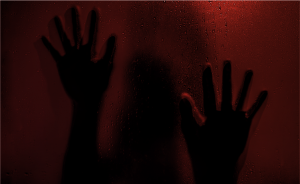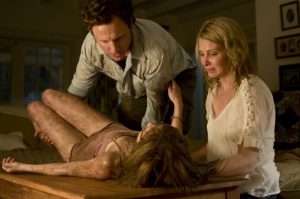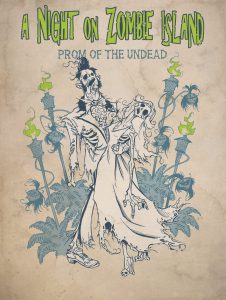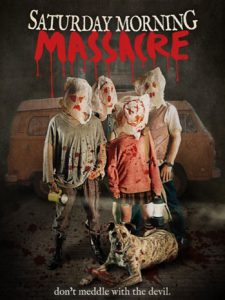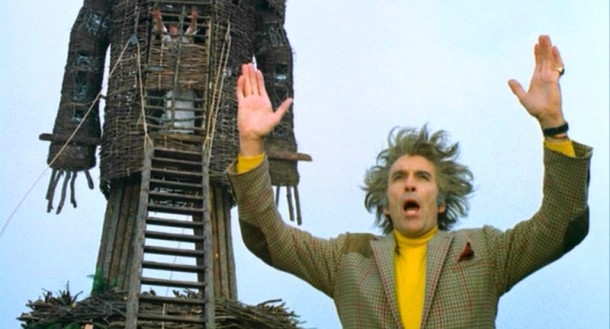
5 Things Horror Movies Taught Us about Witchcraft
In just a few weeks, we’ll reach the Spring Equinox. You’re probably wondering why you should care. Most people don’t. Maybe you’ll see a quick blurb on a news site about the topic, but otherwise, an equinox tends to concern only astronomers and hippy-dippy New Age people who celebrate chakras and life energy. Oh, and witches. Witches also care.
Unlike vampires and werewolves, witches do in fact exist, though at risk of dashing your expectations, they don’t traditionally murder people or levitate anything. Though Buffy’s Willow might make you think otherwise, neither novice spellcasters nor longtime Wiccans can usually suspend even the commonest of pencils. Gravity ruins everything.
While witchcraft in some physics-abiding form or another does live among us, movies (and, in some cases, television) don’t usually worry about things like, you know, fact checking. True-to-life details spoil all great stories. As a result, audiences have spent over a century learning an arbitrary set of rules about how spells, sacrifices, and covens operate.
So hold onto your black cauldrons and pointy hats. In honor of the upcoming equinox, here are a few stereotypical—and mostly erroneous—lessons that horror movies have taught us about witches.
Lesson #1: Every spell requires human sacrifices (and preferably virgins)
If horror movies are to be believed, a witch’s shopping list looks something like this: generous amounts of rope, a forest full of wicker, recently sharpened knives, and a bevy of supple virgins.
Human sacrifice is possibly the most pervasive lore about witches. Among other movies, just check out Black Sunday, Horror Hotel, and perhaps most beloved of all pagan cinema, The Wicker Man. By the third act (or earlier), the human blood is gushing.
Not to suggest all witches were innocents who revered life, but when it came to killing, they usually opted for animals over people. After all, villagers are less inclined to notice the absentee sheep than a missing maiden. Rather mean, even bordering on sinister, but not sell-your-soul-to-the-nearest-devil kind of evil.
And what about society’s original Burning Man Festival? Such contraptions did exist, but the contents of an average wicker man rarely featured humans. Why not? Examine the end of Robin Hardy’s 1973 classic for a moment. One of the most unbelievable parts is that Edward Woodward’s wannabe hero doesn’t simply kick his way out of the effigy. If he waited for the fire to soften the wicker, he could just nudge the nearest wall and it would collapse. Saruman and his nubile beauties would be hard pressed to corral him back inside without getting burned up themselves. The evil pagans would be forced to construct another titular figure, and our uptight lead would get a few day reprieve during which he can try (and probably again fail) to escape.
Apply this same logic to ancient times. People do not traditionally just whine and wait to burn to death. They flail. They kick. They escape. The only real account of people being sacrificed inside oversized baskets came courtesy of Julius Caesar. And that guy so severely lacked in basic observational skills that he couldn’t predict the biggest political coup in history that was probably being planned as he wrote, “And those Druids are real savages!” So maybe he’s not the best primary source on cultural norms.

Lesson #2: Witches are easy to spot because they always wear black
In old-time westerns, the good guys ride into town on white horses to save the day while the bad guys on black stallions rummage for maidens and gold. Switch the genders to female and substitute capes for horses, and you’ve pretty much got the outline for most witch movies.
In Mario Bava’s Black Sunday, for example, the witch not only dons black attire but also has a mane of raven tresses (and some really wonky bangs that genuinely confuse me). Just for good measure, she—or more aptly, her nineteenth century lookalike descendant that she plans to possess—owns a pair of black pooches. Don’t miss the symbolism here, folks. Black equals bad.
Swap baroque Bava for Bauhaus and you’ve got The Craft. Back before she was hot on the trail of serial killer Red John, Robin Tunney was the new witch on the block, joining a makeshift coven comprised of three damaged and scheming teenagers—are there any other kind? Some color does appear in the quartet’s schoolgirl looks throughout the film. But as Fairuza Balk’s Nancy, the worst witch of the bunch, becomes exponentially eviler, she adds comparative amounts of black until her wardrobe devolves into a perfect photonegative of an Abercrombie ad.
Even Suspiria, which eschews many usual tropes in favor of a few baffling choices (see Lesson #4 in particular), stands guilty of this. Half the ballet academy staff could pass for lost cousins of the Addams Family. And though the film’s production design, costumes included, is stunning, it certainly succumbs to the stereotype.
Screenwriters apparently forget—or don’t know or just don’t care—that many Old World witches lived in abject terror of being exposed for fear the villagers would sharpen the pitchforks and light the torches. If witches had all worn black, thereby making detection a cinch, then the Spanish Inquisition would have been over in a day.

Lesson #3: Witchcraft brings women together, even if it sometimes tears them apart
Filmmakers tend to know almost nothing about women, but turns out they understand even less about witches. And unless you’re Merlin, most films attribute magic to females. This means screenwriters are forced to combine two subjects about which they’re completely befuddled. As a result, many cinematic covens must endure what amounts to supernatural slumber parties, complete with saccharine giggle fests. You see, regular women have pillow fights while wearing pajamas and talk about boys as they eat ice cream right out of the carton. Witches, on the other hand, levitate pillows while in their PJs and talk about love spells as they eat eyes of newt straight from a mortar and pestle. Just kidding. They enjoy Ben & Jerry’s too. We can’t stray too far from the cliché.
Once again, The Craft is a primary offender here. A montage of the girls bonding over things like hair color is rather contrived, especially seeing that the trailer already informed us the four of them will not remain BFFs. As women with power are apt to do in the cinematic world, they turn on each other like angry tweens fighting over the last Justin Bieber concert ticket.
And although it’s less horror and more fantasy, The Witches of Eastwick takes a different yet similarly ridiculous approach. The eponymous trio remains friends until the last frame, but that’s only because they agree to do what all women have done at some point in their dating lives: they embrace communal sharing of Jack Nicholson. This is absolutely fine, though, since they increase their magical powers AND get cute babies out of the deal. Because having kids with the devil is so much fun. Just ask Rosemary Woodhouse.

Lesson #4: Witches can do anything; just don’t expect them to be logical about it
According to horror movies, witches are omnipotent in every conceivable way. They can make someone fall in love with them. They can drive someone to an untimely death. They can fool the IRS into thinking their coven’s owed a hefty tax return. Basically, whatever the plot needs, a witch can do. They’re not, however, motivated to use this power in any consistent way.
For all its greatness, even the Buffy the Vampire Slayer television series committed this offense. In the Season Six finale, Willow was capable of destroying the entire world—while being swathed in black, no less—but she can’t heal Xander’s gouged-out eyeball during Season Seven? Shouldn’t repairing vitreous fluid be an easier feat than bringing down the whole of humanity? Witchcraft is terrific at moving a plot along but is often randomly restricted when a character needs an obstacle to overcome.
But perhaps the best example of witches doing whatever the heck they please is in Dario Argento’s classic, Suspiria. Members of the coven are chasing down a nosy ballerina who eavesdropped and learned too much about their wicked plans. Since the back rooms of the ballet academy are akin to an M.C. Escher drawing, the witches have only a vague idea which direction she’ll flee. But conveniently enough, the luckless dancer drops straight through a random window without looking where she’ll land and becomes entangled in enough razor wire to fill a Lowe’s warehouse. Gore-laden cleanup on Aisle Five.
So why is there an inexplicable room full of razor wire? Because they’re witches, that’s why. Audiences should never ask the reason witches create such madcap, Wile E. Coyote-caliber schemes. Inquiring about evildoing makes you more susceptible to its thrall. Or something like that.

Lesson #5: But no matter how powerful witches are, some untrained hero (or heroine) will come along and defeat them, even sometimes by accident
While these treacherous feminine beasts might spend ninety minutes or more terrorizing everyone in sight, audiences can rest easy knowing that our inexperienced lead will stumble upon a way to end the madness. Granted, an unqualified protagonist against an insurmountable villain is the basic plot of almost every adventure ever written, but when your antagonist is invincible, any satisfying conclusion to the story almost by default has to require a gimmicky leap. If nothing else, common sense should encourage witches to create impenetrable force fields around themselves so that little busybody goodie-goodies don’t have the option to annihilate them.
Back to Black Sunday, the wide-eyed hero manages to save his lady love (i.e. the girl he knew for five minutes) when he essentially guesses which one is the evil double. And perhaps the most famous conjurer ever to grace the Silver Screen, the Wicked Witch of the West also falls prey to an amateur’s antics or, more specifically, Dorothy’s oafishness as she kicks over every stray bucket in sight. Like the super advanced aliens in Signs, our baddie is defeated by that age-old weapon: water. Yes, good ol’ H2O, long renowned as the primary means of combating evil and extraterrestrials.
Finally, let’s turn again to Suspiria. The aforementioned ballerina that pries into the coven’s evildoing ends up sliced to ribbons, but when Jessica Harper’s Suzy tries the same gambit, she not only kills a cunning, centuries-old witch ringleader, but also destroys the whole academy in a resulting fire. She’s shown little competence thus far, either at ballet or witch hunting, but in one easy move, she defeats the whole coven. As a side note, she also loses her place of employment, so hopefully, she can do more than just pirouette and stab old women.

And to close this bewitching article, here’s one more piece of witch trivia. Most people recognize the infamous “double double toil and trouble” scene from Macbeth, but few know what the seemingly creepy ingredients actually are. Eye of newt and toe of frog are actually euphemisms for the rather mundane mustard seed and buttercup respectively. And the “spell”?
It’s a homeopathic cold remedy. The whole scene is a joke playing on people’s expectations about witchcraft. Score one for the Shakespeare. If only screenwriters were in on the gag.



